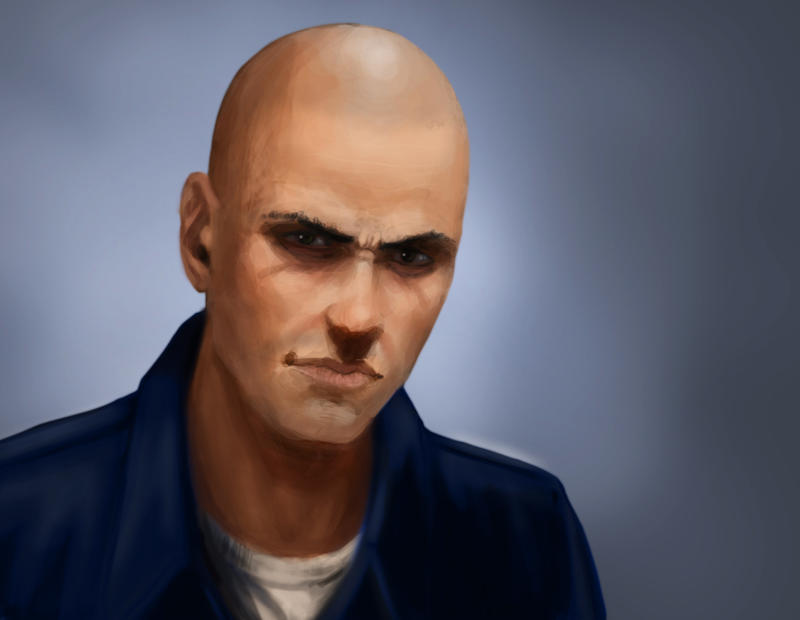The flag of Eisengard. The silver background represents iron which is the backbone of the Eisengard economy and gives the nation its name. The maroon cross represents the Posdal people. The eagle and the crown over the center of the cross represents the crowned ruler of Eisengard being the protector of the faith.
Motto of house Merkkellorne and the nation in general. Meaning 'God is with us'.
Territorial Claims:
Species: Eisengard's population is split predominantly between Humans from the Luchmeyer mainlands and the native Lasangnon (which translates'
jungle people' in their native tongue.) The Lasangnon people are predominantly six feet tall (1.8288 meters) on average and generally bulkier in body mass than most Humans. Most of the Lasangnon's body is covered in fur aside from the palms of their hands, the soles of their feet, their backside and their faces. The color of their fur are mainly reddish brown or black in color. They have better senses of hearing and smell than most Humans. However they are not as agile and does not have the same endurance when performing physical labor.
Population (total and by species):
38,161,345 in total
15,100,000 Lasangnon
21,100,150 Humans
2,061,194 Others
Culture and Society: Eisengard is always infamously known as a 'church with an army'. The Church of the Holy Posdal was established from the local beliefs of the natives. Posdalism takes it root word from the term 'posdal', meaning 'messanger' in the tongue of the Assai people. Assai merchants took their beliefs to the coastal islands of the south and with them their religion. The Lasangnon people eagerly adopted the till the arrival of the Luchmeyerian colonizers. Over the centuries, the upper class of Eisengard would come to adopt it in secret. Posdalism eventually became the state religion when the self-proclaimed king Ferdinand Otmar seceded from the Luchmeyerian empire. Aiming to further distance the new kingdom from its mainland roots.
Posdalism has become even more vital to the state in passing century after the creation of the empire. Though the king holds absolute rule in the realm, his influence runs down to the clergy before it reaches the common man. Officer Universities are also maintained by a shared control of the church and state. The army has armed clergymen, responsible for any number of religious activities as well as raising the morale of the common soldiers.
The church itself is led by the three Posdals. The Posdal of the Mother and the Posdal of the Son are chosen by a diet of Cardinals who choose from among their numbers who will take the positions. The Posdal of the Mother
History: Eisengard started a small duchy founded in -, --, 1003 by Jarl Hiltrud the Mad. Her title a result of her brash actions and short temper.She was known for her brave charges against the enemy and her vigor for battle. Jarl Hiltrud was reccorded to have have chased off curious Lasangnon tribals that wandered near her starting colony. One major Lasangnon chieftain, Datu Saripada, was the first to wage war on what he saw as brazen intruders. Jarl Hiltrud would defeat numerous war parties and would come to defeat the cheiftain himself at the battle of Roteswasser during -, --, 1003. Datu Saripada's village was taken over by the jarl and a quarter of the defeated lasangnon were butchered, the rest taken prisoner or subjugated. Several Datus would follow in declaring war against the Luchmairish invaders and their Human associates. The colony was only seen fit as a small plantation of local opium plants and cash crops during its first few years. However under the rule of Hiltrud the Mad's son, Jarl Harold, several prospectors discovered valuable iron reserves crisscrossing the country. A great mining boom enveloped the country. Turning the small duchy into a heavily populated mining territory. Thus the Duchy would recieve its name. Eisengard, the realm of iron.
The next 200 years have seen Eisengard faced off and traded with neighboring jarls. Switching fueds and alliances with each generation. The twisting and shifting wars and trade pacts lured many mercenaries to the region. Turning the Realle sea into a luxurious oportunity for freelance soldiers and marines. The situation became chaotic for the traders who were mostly Human. They were forced to hire additional sentries for their trade ships. It caused major discontent with the merchant-class who were rising steadily in power. In -, --, 1203 Jarl Otwin appointed a prominant Human merchant to oversee domestic affairs while he focused on his skirmishes with the duchy of -----. This merchant was Ferdinand Merkkellorne. He was given the title of
kolonialmarshal, allowing him govern the day to day operations of Eisengard. He seemed to be a loyal servant of the jarl and the jarl's guards and spies never found any reason to suspect him of treason. However Ferdinand had secretly been building alliances with the Lasangnon natives. He had spent a considerable amount of time studying their culture, customs and religion. He hired liasons to make contact with notable Lasangnon community leaders. In -, --, 1203 Ferdinand would gain their trust by secretly converting to Posdalism with several prominent Lasangnons as witness. In the coming months Ferdinand along with his Lasangnon planned to overthrow Luchmeyer rulers of the isle.
However Ferdinand's plans were placed in peril during -,--, 1204. One of Ferdinand's Lasangnon allies, Bastian Hartmann was arrested by the local authorities for suspension of treason.
Economy:
Army:
Navy:
Traits:
Foreign Relations:
Rolls: Land Area: 11-5=6
Land Fertility: 13
Social Development: 10
Technological Development: 20-6=15
Land Power: 11+6=17
Naval Power: 11+3=14
Economy: 6+2=8
Magical Reserves: 14
Magical Sophistication: 14
Societal Development:
Technological Development:
Economy:
Land Power:
Naval Power:
Arcane Sophistication/Religious Strength:


 .
.